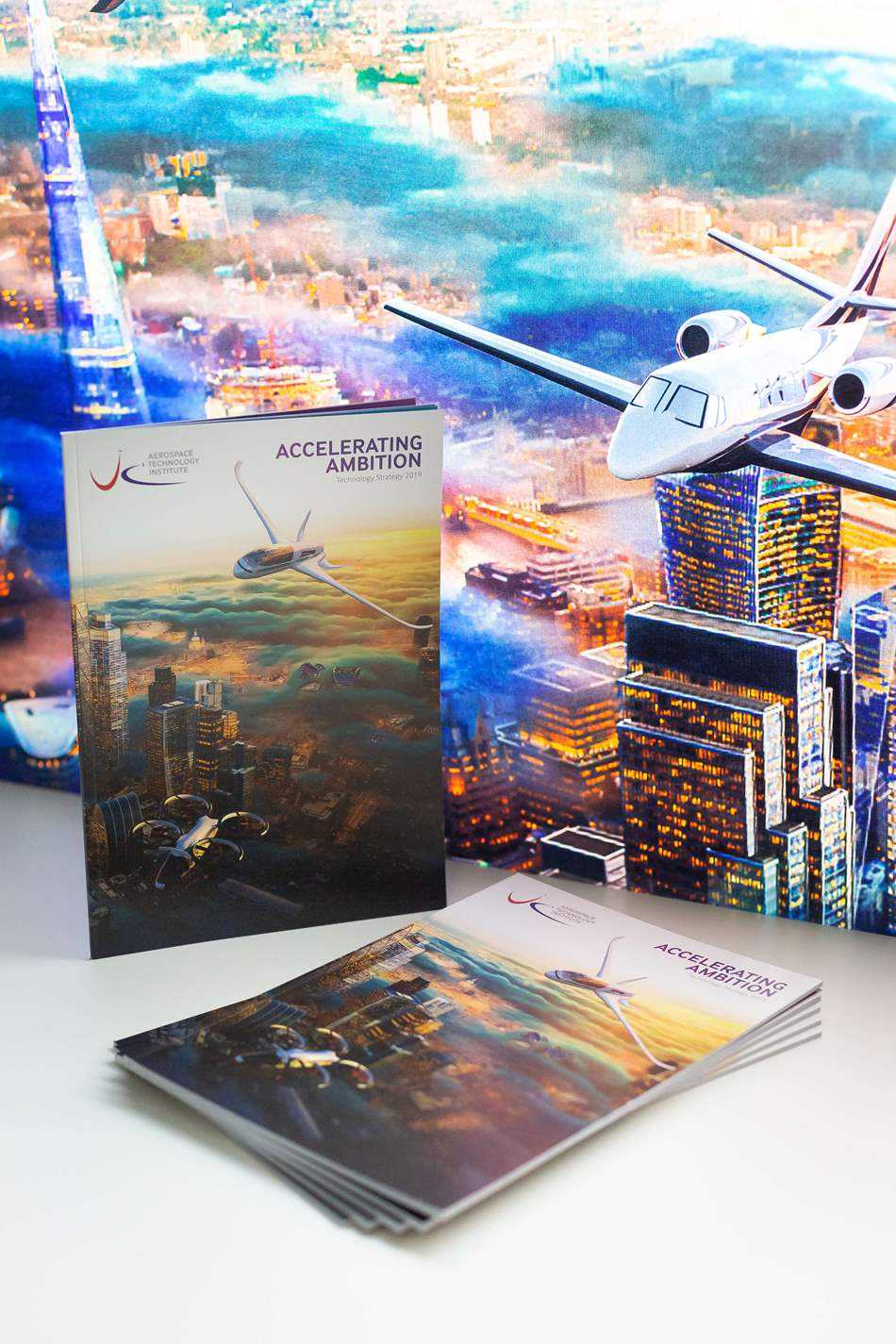Leading innovation in UK aerospace

Aerospace Technology Institute (ATI) chief executive, Gary Elliott, offers his thoughts on the institute’s Accelerating Ambition strategy, the funding opportunities through its ATI Programme, the impact of Covid-19 and how it is helping support manufacturing.
It is a great pleasure for the Institute to appear in Aerospace Manufacturing again. The May edition covered not only the ATI Boeing Accelerator, but also two ATI projects, ICap and DRAMA, concerned with composite materials and additive manufacturing. This reflects the fact that six years after the ATI was founded, we have built up with our partners in industry, academia and government a project portfolio worth over £2.5 billion to drive step changes in civil aerospace, embracing the industry at large, and establishing the building blocks for future success.

Beginning with R&D projects however risks putting the cart before the horse. The ATI was created primarily to develop a technology strategy for the sector, to bring clarity, focus and consensus to how government and industry should invest together for maximum national economic benefit. And the extent of that benefit is clear, with recent analysis showing that spillovers from aerospace R&T make a return to the rest of the economy four times higher than the return to aerospace itself. One hundred and fifty million pounds of public investment each year from 2013 to 2026 will create an economic return of £114bn by 2035.
Turning to the strategy, aerospace can seem like a sector which changes slowly, but I am struck by how different the agenda is now since we started. In 2014 it was about improving competitiveness and driving environmental advances in line with the then targets set by the Advisory Council for Aeronautics Research in Europe (ACARE). Potential new products on the horizon were single-aisle and middle-of-the-market aircraft. Now, competitiveness remains vital, but sustainability has leapt right up the agenda with the much more challenging net zero target for greenhouse gas emissions by 2050. Consideration of new products now is driven by the environmental imperative, but also new mobility opportunities such as urban air taxis enabled by developments in autonomy and electrification. These three pillars - competitiveness, sustainability, and mobility – underpin the Institute’s most recent technology strategy ‘Accelerating Ambition’ published in November last year.
Covid-19 has of course been a game-changer. Its impact has been massive and is likely to last some time. But we have worked hard to stay open for business, maintain our activities, and maximise the ATI’s value to the sector. And it has been encouraging to see the high level of interest in our most recent funding opportunities - submissions to April’s expression of interest for the ATI programme were up by around 250%, for example. This tells us that companies still see R&D – particularly on sustainable aviation and green technologies - as core to their strategies. But it would be naïve to think that nothing has changed. Companies will have to manage the economic slowdown. Some projects will be postponed or cancelled in the process. Some skilled technical staff may be furloughed or worse. The Institute is therefore urgently looking at ways to bring forward critical research for the recovery, deploy the UK’s leading aerospace technologists, and give the UK a lead in next generation environmentally-friendly aircraft.
Scale of future challenges
Well before Covid-19, the scale of the future challenge in aerospace was forcing us to think anew about how innovation happens in the sector. It is clear that if we are to achieve the new environmental targets, the pace of change needs to pick up. As well as large scale projects in areas such as electric flight, sustainable fuels, and new aircraft architectures led mainly by the industry leaders, many other disruptive innovations will be needed, often coming from smaller companies or operators outside the traditional aerospace family; innovations that will need to be adopted, certified, and exploited by the industry at scale and at pace without compromising the industry’s excellent safety record. And it must result in affordable products.

This thinking led us to create the ATI Boeing accelerator last year along with Boeing and GKN. As well as the opportunity to attract equity funding from Boeing, the accelerator provided mentoring across a wide range of disciplines, as well as direct access to leading engineers in the main aerospace companies. The first cohort of nine start-up companies has just completed its programme, and we look forward to tracking their future success. As a proof of concept, it has worked very well, and we hope to embark on a second cohort in due course.
Ushering in the new world of air mobility services requires another paradigm shift, particularly in the management of the skies, and the greater role of the aircraft itself in air traffic management. This led us to propose to Innovate UK some two years ago a holistic programme to model the future system. Now known as Future Flight, we are working closely with that initiative to bring forward the vehicle technologies critical to realising the vision – another great opportunity for companies outside the mainstream to develop their ideas.
All stand together
Before ending, I should touch on Europe and the international scene. The UK is a great aerospace nation and the Institute is determined to develop its capabilities to the full. At the same time, aerospace is a global industry and all major aircraft programmes represent the culmination of efforts in many countries. Many companies with overseas headquarters are already in the UK, and we will give a warm welcome to others who want to set up here and pursue their activities. We are also pushing hard with the Aerospace Growth Partnership to ensure that the UK retains good access to the EU’s R&D programmes in the future. And we are creating opportunities for bilateral R&D projects with other countries – we have run two joint calls with Sweden and are working up a call with Canada.
In conclusion, whilst present conditions are difficult, the Institute remains open for business. It is here for UK aerospace and I hope that any organisation within the sector will know that they can speak to us for help and advice on their current or future research plans – plans that we may be able to showcase in future editions of Aerospace Manufacturing.












